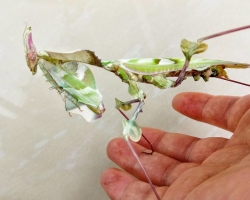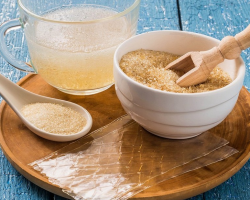What does cabbage seedlings usually suffer from? How can you deal with diseases and pests of cabbage seedlings? How to save the affected seedlings of cabbage?
Content
- What to do if cabbage is on the seedlings - a black leg?
- Why does the cabbage seedlings have purple leaves?
- Holes and white spots appeared on the seedlings of cabbage: what to do?
- Warm up the seedlings of cabbage: what to do
- Why does cabbage seedlings turn yellow and dry out?
- Why is the cabbage seedlings not growing?
- Why do leaves are twisted in cabbage seedlings?
- The seedlings of cabbage stretched out, outgrown: what to do?
- How to plant outgrown cabbage seedlings?
- Is the seedlings of the cabbage afraid of frosts?
- The seedlings of cabbage froze: what to do?
- Aphid on seedlings of cabbage: how to fight?
- How to treat cabbage seedlings from diseases and pests?
- Diseases and pests of cabbage seedlings: video
It is almost impossible to grow cabbage seedlings and not encounter a number of problems, diseases and pests. This demanding culture brings gardeners a huge amount of trouble. But, owning complete information about the care and treatment of cabbage seedlings, many difficulties can be avoided and most mistakes can be corrected.
What to do if cabbage is on the seedlings - a black leg?

First you need to find out what this "black leg" is. A similar disease is a fungal infection that affects the rhizomes and the stem of the plant. Its main feature is the blackening of the root neck of seedlings, thinning of the stalk, and then its complete drying out. In addition to black spots, on the root neck of a sick plant, you can notice pimped formations or growths.
Attractive for the black legs, as well as for other fungi, are the following conditions:
- increased humidity
- warm environment (soil)
- increased acidity of the Earth
- thick plantations of seedlings
- lack of air flow between plants
In other words, in order to avoid the appearance and development of a black leg, the following preventive actions must be carried out:
- pour
- adhere to generally accepted standards of planting seedlings (distance between seeds)
- ventilate the premises with seedlings
- check the pH of the soil
- disinfect the soil before planting seedlings in it
- process and harden the seeds of cabbage before planting
If the black leg has already struck seedlings, then there are several ways to deal with it:
- try to save the sick plant, separating the affected by its healthy part (the cut should be green, not black) and rooting it in the ground
- remove the sick seedling from a common box along with a lump of earth
- put healthy plants in another box, and throw off the affected earth
- process healthy sprouts in a common box with a solution of manganese, burgundy fluid or copper sulfate
- cover the upper layer of the soil above the lane sand that has begun with a black leg, activated coal or ash
- acidify the soil with a solution of soda (1 t.l. baking soda per 1st of water)
- seedlings transplanted into open ground, and infected with a black leg, can be fertilized with manure or chicken droppings
Why does the cabbage seedlings have purple leaves?

Experienced gardeners explain the appearance of the cabbage of purple leaves on the seedlings of two conditions:
- lack of useful trace elements, in particular nitrogen and phosphorus
- stress transferred by the plant (picking, landing in open ground, lack or excess moisture, low room temperature)
In the first case, seedlings can be helped with banal feeding with missing substances. It is worth noting that the plant is necessary to fertilize in moderation.
In the second situation, it is advisable to first find out what was the cause of stress, and only then take measures:
- If the seedlings are cold, then she needs to provide comfortable temperature conditions
- If there are problems with watering, then they need to be solved
- If the plant suffers from changing the situation, then you can just give it time to acclimatization
Holes and white spots appeared on the seedlings of cabbage: what to do?

There are a number of diseases that can cause the appearance of white spots and holes on the seedlings of cabbage:
- Powder
- Peronosporosis or false powdery mildew
- Lack of nitrogen
- Crusade Bloshka
Dragged dew is not considered too serious a disease, especially if it appears on an adult plant. The best prevention of the disease is to comply with the rules of crop rotation and the fight against weeds. However, this ailment is able to reduce the crop of culture, because it is advisable to treat the sick seedlings with any drug for flour dew. Most often, phytosporin is used for these purposes (it is used no more than once every 2-3 weeks).
Peronosporosis, as well as powdery mildew, is dangerous only for young plants. It is possible to prevent its appearance using the organization of conditions comfortable for seedlings, disinfection of soil and seeds before landing. It is possible to overcome such a disease with the help of industrial products, according to the type of topaz, or a solution of liquid soap and copper sulfate (1 tbsp of the indicated agents for 10l of water).
The third problem is easily solved by introducing organic or mineral nitrogen fertilizers into the soil.
The cruciferous flea, like no other, is able to spark the seedlings of cabbage in a matter of days. You can prevent the attack of this insect with the help of autumn and spring processing of the soil before planting seedlings in it, as well as by disinfecting the seed seeds themselves. Many gardeners practice planting plants such as coriander, dill or petty around their beds. These crops make a smell that is unpleasant for insects. If the flea nevertheless entered the territory of cabbage planting, then it should be fighted with more radical methods: chemical drugs, ash infusion or a solution of copper sulfate.
Warm up the seedlings of cabbage: what to do

- The reasons for the wilting of cabbage seedlings can be banal violations of the rules and procedures for planting seedlings. In addition, novice gardeners make a lot of mistakes while leaving the first shootings - either they are too poured with water, or, conversely, are not watered enough. Another common mistake may be a violation of the temperature regime or the level of humidity in the room where there are seedlings with seedlings.
- Well, the most obvious and widespread reason for concern regarding the concealing seedlings of cabbage is the attack of pests. With each of them you need to fight accordingly.
- It is also worth saying that experienced gardeners prefer not to grow seedlings of this culture at home, but to sow it immediately in a greenhouse or greenhouse.
Why does cabbage seedlings turn yellow and dry out?

- The yellowing of cabbage seedlings after its transplantation into open ground is normal and common. Moreover, do not worry if the yellowers are only lower, cotyledon leaves. Such a reaction of the plant to a transplant is considered the norm.
- Also, the seedlings of cabbage may turn on from insufficient or excessive watering.
- To paint its leaves in yellow, a strongly scorching sun or, on the contrary, planting in a shaded area of \u200b\u200bthe garden.
- The way out of this situation may be additional top dressing of seedlings with complex mineral fertilizers.
Why is the cabbage seedlings not growing?

The reasons for this phenomenon may be a lot:
- Strong deepening of cabbage seeds in the ground when planting
- Insufficient or, conversely, enhanced watering
- Non -compliance with the temperature regime
- Insufficient humidity in the room with seedlings
- Lack of fresh air in the room or, on the contrary, strong drafts
- Violation of the processing procedure for seeds or soil before planting
- Pest attack
Why do leaves are twisted in cabbage seedlings?

There are a number of factors provoking the process of twisting leaves on cabbage seedlings:
- Disadvantage or excess of nutrients in the ground (did not feed or overfeed the soil)
- Burn due to spraying seedlings of various kinds of chemicals as top dressing or processing from pests
- Insufficient or rare watering
- Attack of the Belkolka butterfly
- Damage to the leaves of the cabbage aphid
The seedlings of cabbage stretched out, outgrown: what to do?

- If the seedlings of cabbage for some reason stretched before diving, then it must be immediately planted in individual tanks.
- In the process of such a transplantation, it is advisable to pinch the seedlings of the seedling (pinch), deepening it as much as to cotyledon leaves.
- After picking the seedlings, it is advisable to put it in a cool place (from +10 to +13 degrees) for 7-10 days and provide it with a worthy twelve-hour lighting.
- If the seedlings stretched out after diving, then you can try to cut off the top or treat it with special drugs that slow down the growth process.
How to plant outgrown cabbage seedlings?

- Experienced gardeners recommend outgrown seedlings, on the eve of its landing in open ground, not to water for at least a week.
- You can moisten the soil in such a seedlings only a couple of hours before the transplant.
- The outgrown seedlings must also be deepened, breaking off two lower leaves.
Is the seedlings of the cabbage afraid of frosts?

- Any plant, especially being in the stage of seedlings, is afraid of low temperatures. Cabbage in this case is no exception.
- The seedlings of this culture are best planted in open ground after the likelihood of night frosts is minimized.
- If such a risk is still present, then the plant must be prepared for this in advance.
- Even when planting seeds, they need to be tempered.
- It is also advisable to temper the already broken sprouts.
- Prepared seedlings can withstand frosts up to -4-5 degrees.
The seedlings of cabbage froze: what to do?

- The frozen cabbage seedlings can be treated with special chemicals.
- Such funds will help seedlings to cope with the misfortune that happened to her.
- Some gardeners recommend watering such plants with cold water (ideally melt) with water.
Aphid on seedlings of cabbage: how to fight?

- Cabbage aphid is a small pest that reveals its presence in the cabbage with white, and then with a brown raid on the leaves of its seedlings.
- A aphid, like any other pest, is easier to prevent than to overcome.
- Prevention against cabbage aphids is the proper planting and care of cabbage.
- Many gardeners plant fragrant marigolds, dill, parsley, rosemary, mint, etc. next to a bed of cabbage. The smell of flowering of these plants scare away many insects and other pests.
- Folk means of combating cabbage aphids are the infusion of tomato tops, tobacco dust or wood as well as soap solution.
- Of the chemicals, anabazin-sulfate has proven itself well, the solution of which is processed seedlings.
How to treat cabbage seedlings from diseases and pests?

On the shelves of specialized stores, there are dozens, or even hundreds of chemicals that contribute to getting rid of various cabbage ailments or pests. However, many gardeners still prefer to use only natural drugs or substances that help fight these problems. Thus, you can be sure that the pesticide will not fall inside the cabbage head, and the vegetable will be absolutely safe for the human body.
Here are the most popular and proven folk methods of processing cabbage seedlings from diseases and pests:
- You can fight with a cruciferous flea by spraying seedlings with a solution of vinegar, chicken or celandine, pollination of sifted wood and tobacco dust or gash.
- To get rid of cabbage aphids will help: wiping the leaves with soap solution, spraying iodine with milk, ash with soap or infusion of tomato, potato tops.
- The cabbage whitewood is afraid of spraying with a solution of ash and soap, infusions of burdock, onion, garlic or weeds.
- You can fight the cabbage moth by pollination of seedlings with wood ash.
- You can expel the cabbage fly out of the garden by watering cabbage with saline solution and pouring soil with wood ash, naphthalin with sand, tobacco dust, as well as with the help of spraying seedlings with an extract of coniferous plants or infusion of celery stalks.
- Only methods of prevention can be dealt with a cabbage weevil - this insect is not afraid of any other substances.
- Busting powder, infusions of garlic or onions, as well as a solution of ammonia, can scare away slugs and snails.
- For such large pests, you can still equip traps-dumplings-a buried container with wandering yeast, kvass or juice.
We hope that our article will help protect your cabbage seedlings from numerous problems. Good seedlings and crops to you!








my cabbage grows at home on the window, it is still small, but someone ate several leaves. What kind of pest is it how to deal with him a house. means
the article is good but did not answer my question